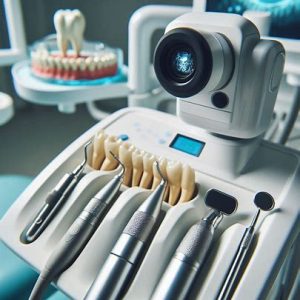The Role of Dental Professionals in Early Cancer Detection: What Every New Practice Owner Should Know
Understanding Oral Cancer’s Silent Threat
 Oral cancer often develops quietly. Patients may not notice sores, lumps, or discoloration until the disease progresses. Dentists, however, see these signs during routine exams. Red or white patches, persistent sores, or unusual tissue changes in the mouth or throat can signal trouble. Because dentists examine patients regularly, they’re uniquely positioned to catch these warning signs early. For new practice owners, this responsibility underscores the need for thorough training and advanced diagnostic tools.
Oral cancer often develops quietly. Patients may not notice sores, lumps, or discoloration until the disease progresses. Dentists, however, see these signs during routine exams. Red or white patches, persistent sores, or unusual tissue changes in the mouth or throat can signal trouble. Because dentists examine patients regularly, they’re uniquely positioned to catch these warning signs early. For new practice owners, this responsibility underscores the need for thorough training and advanced diagnostic tools.
Consider the numbers. According to the American Cancer Society, about 54,000 new cases of oral cavity or oropharyngeal cancer are diagnosed annually in the U.S. Early detection boosts survival rates significantly—up to 80-90% for early-stage cases. Yet, late-stage diagnoses drop survival chances below 50%. These stats highlight why dentists must act as vigilant gatekeepers. New owners can set their practices apart by prioritizing cancer screening protocols from day one.
Building a Cancer-Conscious Practice
How can new owners integrate early cancer detection into their practice? First, invest in training. Staff should know how to recognize suspicious lesions and understand when to escalate concerns. Regular continuing education keeps everyone sharp. Next, equip the practice with modern tools like intraoral cameras or fluorescence-based screening devices. These technologies enhance visibility, making it easier to spot abnormalities. Finally, create a culture of thoroughness. Encourage detailed patient histories and comprehensive exams, even for routine cleanings.
Transitioning to ownership is exciting, but it’s also a chance to rethink patient care. For example, establishing clear protocols ensures every patient receives a consistent, high-quality exam. Documenting findings meticulously protects both patients and the practice. Moreover, educating patients about oral cancer risks, such as tobacco use, heavy alcohol consumption, or HPV exposure, empowers them to stay proactive. A practice that prioritizes prevention and early detection builds trust and loyalty.
Challenges and Opportunities
Of course, implementing these changes isn’t without hurdles. New owners often juggle tight budgets, staff transitions, and patient retention. Investing in advanced tools or training may feel daunting. Yet, these investments yield long-term benefits. A practice known for thorough care attracts patients and referrals. Additionally, early detection reduces the need for costly, invasive treatments down the line, benefiting patients and the healthcare system.
Another challenge? Time. Comprehensive exams take longer, and busy schedules can tempt shortcuts. However, streamlining other processes—like digital record-keeping or appointment scheduling—frees up time for meaningful patient interactions. New owners should view these challenges as opportunities to innovate. A practice that balances efficiency with exceptional care stands out in a competitive field.
READ ALSO: Are There Risks of Developing Cancer or Other Diseases from Dental Implants
The Bigger Picture
Dentists aren’t just oral health experts; they’re partners in public health. By catching oral cancer early, they reduce mortality rates and improve quality of life. New practice owners have a chance to lead this charge. They can shape their practice’s culture, invest in life-saving tools, and educate their community. It’s a big responsibility, but it’s also a privilege.
As you embark on practice ownership, remember: your role extends beyond teeth. You’re a guardian of health, a detective of early signs, and a trusted ally for your patients. Embrace this opportunity. Build a practice that doesn’t just shine smiles but saves lives. Isn’t that why you became a dentist in the first place?
